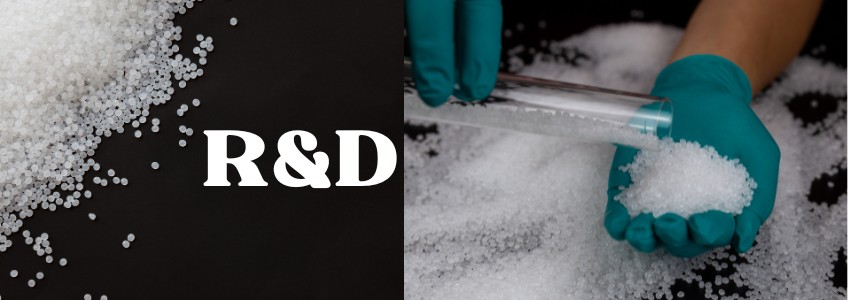
The polymer industry can implement strategies to improve the throughput of their R&D department as it leads to faster innovation, increased productivity, and enhanced competitiveness.
7 minutes read
Introduction
For a polymer-based company to be effectively on top of its game among its competitors, the R&D department must coordinate efficiently and systematically carry out its operations. A polymer manufacturing company specializing in Epoxy, PU and Silicone, used to run only 2 batches per day. But after we collaborated with them – preparing weekly R&D plans and arranging materials according to the set plan, the company started running 5 batches per day using the same equipment and manpower.
To ensure this effective and efficient operation of the R&D department, a robust process-based approach should be implemented. In this context, it should also be noted that the performance of the R&D department cannot be measured easily, which is why improving its performance is a complex process. However, we improved the operational activities of the company’s R&D department by simplifying and digitizing their documentation.
What is the importance of R&D?
A well-defined process is one that enhances efficiency, promotes collaboration, improves quality, provides data-driven insights and also follows standard industry norms.
A streamlined and consistent process not only reduces the overall time required for the completion of production, minimizing all kinds of waste production, but also increases product reliability by considerably reducing the scope of errors. The process metrics also provide data-driven insights that ensure informed decision-making.
How to improve operations of the R&D processes in the Polymer Industry?

The R&D department is marked by the influx of new ideas. However, a polymer manufacturer can implement various strategies to improve his company’s operational activities in the R&D department.
1. Mapping and Analyzing the process
To improve any process, it is critical to map and prioritize the activities involved in production accordingly. Creating flowcharts and other visual representations of existing processes can help in identifying the bottlenecks and note the areas where improvement is required.
After analyzing the efficiency of the existing processes, advanced software can be used to gain insight into their performance and improvements can be made accordingly.
2. Utilizing the available Technology
Employing and utilizing software solutions to manage the R&D information like data, experiments and results, can improve the process efficiency. Data analytics can be used to keep track of trends in the R&D department.
3. Working on Process Optimization
For improving operations of the R&D wing in the polymer industry, it is important to optimize the process by tracking the progress of various projects, proper resource allocation and time management.
Establishing measurable KPIs like development cycle, product (to reduce the development cycle), reliability of the product, etc., will also help in analyzing the progress and identifying potential areas of improvement within the process.
4. Implementing standard documentation
To improve processes, it is necessary to create a centralized procedure with detailed guidelines for each step within it. Establishing standardized operating procedures and templates not only ensures data consistency but also promotes brand reliability.
Implementing a knowledge management system can also centralize information and best practices.
5. Employing Project and Risk Management methodologies
Improvement in operations can only be brought about by implementing effective project management strategies like using Agile or Waterfall frameworks to structure projects. KPIs also help to achieve the already set project goals by keeping track of the project performance against defined metrics.
To improve the R&D operation, assessing potential factors that could hamper the project’s success is also essential. Once the possible risks are identified, contingency plans or strategies should be employed and regular reviews of the process should be conducted to mitigate those risks.
Conclusion
Therefore, improving operations in the Research and Development department of the polymer industry might not have a universal process but, by following the strategies of process mapping, risk management, process optimization, implementation of newer technologies and also standardizing the manner of documentation – operational excellence can indeed be achieved.
By following these certain schemes, polymer-based companies can not only improve their product quality and accelerate innovation but also optimize and enhance the efficiency of their R&D department. However, it is important to understand that the improvement of operations in the R&D of the polymer industry is a continuous process that needs to be re-evaluated from time to time.
If you are interested to achieve similar success stories, write to us!
